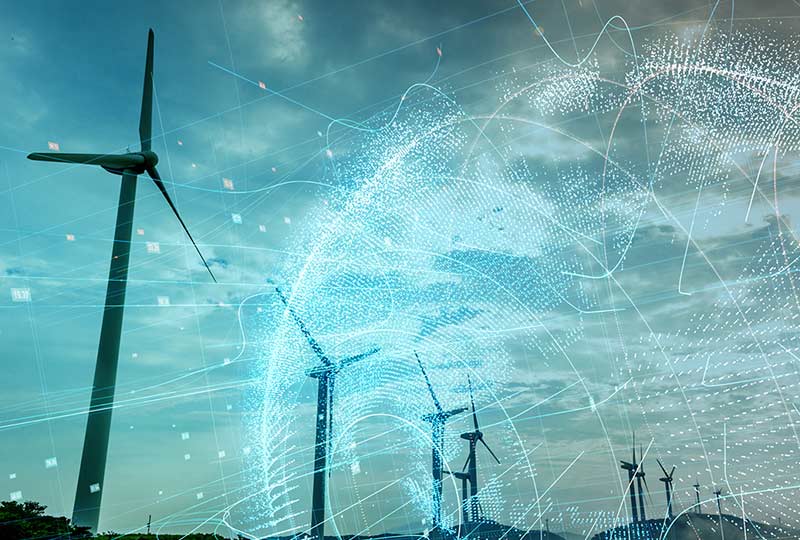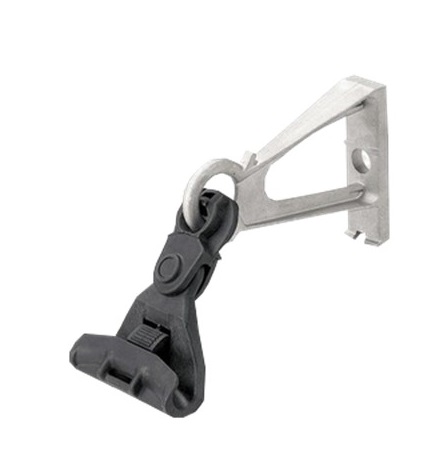
Artificial intelligence (AI) in the energy sector allows for energy security, efficiency, and grid stability in South America. It helps in addressing challenges such as fluctuating renewable energy supplies, grid management, and energy demand. AI supports integration of renewable energy, optimizes grid operations, and enables smarter energy consumption. It also helps the region move towards a more resilient, sustainable, and efficient energy future in South America. AI helps address several challenges that include data quality, accessibility, cybersecurity, and regulatory policy barriers. AI algorithms can analyze data from sensors and devices on the grid to predict equipment failures. It can also detect and prevent cyberattacks on energy infrastructure. Fiber optic suspension clamps are crucial components in modern power grids. They provide a reliable and efficient means of communication between various grid elements.
Fiber optic suspension clamps can have sensors to track factors like temperature, vibration, and strain. AI algorithms can analyze the data in real-time to detect anomalies or signs of potential failures. AI can analyze data from fiber optic sensors to optimize grid operations such as load balancing and voltage regulations. Fiber optic suspension clamps can help improve reliability. Efficiency and security, which contribute to a more sustainable and resilient energy infrastructure. Fiber optic suspension clamp attach fiber optic cables to structures in overhead installations. These networks are crucial for optimizing energy use, managing grid operations, integrating renewable energy sources, and responding to grid disturbances. Dive in as we discuss the importance of fiber optic suspension clamps and AI in ensuring grid efficiency and stability in South America.
Contribution of fiber optic suspension clamps in energy efficiency and grid stability
Fiber optic suspension clamps help in enhancing energy efficiency, security, and grid stability. The clamps attach fiber optic cables to poles and structures in overhead installations. The clamps are from corrosion-resistant materials that help the networks withstand harsh environmental conditions. They also have designs to reduce vibrations on fiber optic cables to reduce wear and tear. Suspension clamps are easy to install and adjust, which makes them ideal for use in areas that need maintenance. The following are the contributions of fiber optic suspension clamps.

- Energy efficiency – the suspension clamp ensure the fiber optic cables remain in place even in challenging weather conditions. This provides reliable data transmission necessary for smart grids and helps in reducing transmission losses.
- Energy security –the suspension clamps keep the cables secure and stable to reduce the risk of signal disruptions. The fiber optic networks allow for remote monitoring control of energy assets. The suspension clamps ensure the integrity of these networks to allow for prompt detection of faults.
- Grid stability – fiber optic networks enable utilities to track the grid in real time and detect faults such as line breaks and voltage fluctuations. Fiber optic suspension clamps support the integration of the variable energy sources. This is mostly by enabling advanced grid management.
- Decentralized energy systems support—fiber optic networks support the deployment of microgrids. The suspension clamps ensure the fiber optic cables in the systems are well installed to provide reliable communication for energy management.
- Enhanced operational resilience – fiber optic networks are crucial for coordinating emergency response and power restoration efforts. Fiber optic suspension clamps ensure the cables remain secure even under harsh conditions.
Benefits of using AI in the energy sector
AI plays a crucial role in enhancing energy security, efficiency, and grid stability in South America. It helps in transforming energy management, distribution, and use. It also helps in renewable energy integration, and enhances smart grid operations. For instance, countries like Brazil, Chile, and Argentina are increasing their renewable energy capacity using AI. Using AI enables the integration of wind and solar power into the grid by forecasting weather conditions. Use of AI helps to reduce operational costs, enhance grid stability, improve energy efficiency, and optimize renewable energy integration. The following are benefits of using AI in the energy sector.

- Addressing energy inequality – AI-powered microgrids and decentralized energy systems can provide reliable electricity. This helps bridge the energy access gap in remote communities.
- Economic competitiveness—use of AI to improve grid efficiency and stability attracts investments in renewable energy projects. AI helps make energy more affordable for consumers and businesses, which contributes to economic growth.
- Energy transition – use of AI helps reduce reliance on fossil fuels, which leads to lower greenhouse gas emissions. AI enables more effective use of renewable energy sources, which makes them more competitive with fossil fuels.